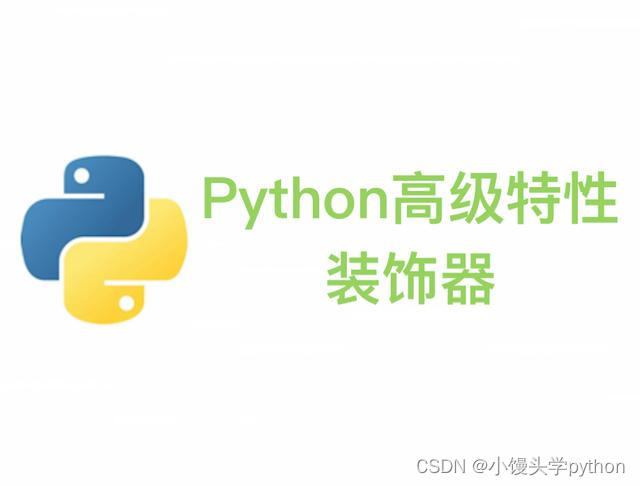
装饰器
装饰器的底层实际就是闭包
**在一个外函数中定义了一个内函数, #函数的嵌套**、
**内函数里运用了外函数的临时变量, #嵌套作用域变量**
**并且外函数的返回值是内函数的引用。 #返回函数**
**这样就构成了一个闭包。**`
装饰器是在函数调用之上的修饰 他的作用是在不改变原有项目代码的基础上增加一些额外的功能
装饰器能有助于检查某个人是否被授权去使用一个web应用的端点(endpoint)。它们被大量使用于Flask和Django web框架中。
日志是装饰器运用的另一个亮点
装饰器格式
def outer(func):
def inner(): #自上而下的执行
print('特殊校验功能')
func() #现在代表ff
print('789')
return inner
@outer
def ff():
print('hello python')
ff()有形参的装饰器
def outer(func):
# @里有形参 这里必须跟
def inner(a,b): #自上而下的执行
print('装饰器函数开始执行')
print('特殊校验功能开始执行')
# 这里也得跟形参
func(a,b) #现在代表ff
print('装饰器函数结束执行')
return inner
@outer
def ff(a,b): #有形参
print('a+b=',(a+b))
ff(50,60)有形参的装饰器 用不定长参数
def outer(func):
# @里有形参 这里必须跟
def inner(*args,**kwargs): #自上而下的执行
print('装饰器函数开始执行')
print('特殊校验功能开始执行')
# 这里也得跟形参
func(*args,**kwargs) #现在代表ff
print('装饰器函数结束执行')
return inner
@outer
def ff(a,b,d): #有形参
print('a+b+d=',(a+b+d))
ff(50,60,89)多层装饰器
多层嵌套装饰器开始的时候,
装饰器自上而下开始,
然后执行函数操作,
结束时,装饰器自下而上结束
def outer1(func):
# @里有形参 这里必须跟
def inner(*args, **kwargs): # 自上而下的执行
print('装饰器函数1开始执行')
print('特殊校验功能1开始执行')
# 这里也得跟形参
func(*args, **kwargs) # 现在代表ff
print('装饰器函数1结束执行')
return inner
def outer2(func):
# @里有形参 这里必须跟
def inner(*args, **kwargs): # 自上而下的执行
print('装饰器函数2开始执行')
print('特殊校验功能2开始执行')
# 这里也得跟形参
func(*args, **kwargs) # 现在代表ff
print('装饰器函数2结束执行')
return inner
@outer1
@outer2
def ff(a, b, d): # 有形参
print('a+b+d=', (a + b + d))
ff(50, 60, 89)装饰器使用场景
- 计算运行时间
身份验证- 写入日志
- redis缓存
计算运行时间装饰器
import time
def timer(func): #timer(test1) func=test1
def deco(*args,**kwargs):
start_time = time.time()
func(*args,**kwargs) #run test1
stop_time = time.time()
print("running time is %s"%(stop_time-start_time))
return deco
@timer # test1=timer(test1)
def test1():
time.sleep(3)
print("in the test1")
test1()身份验证
user,passwd = 'aaa','123'
def auth(func):
def wrapper(username,password,*args,`kwargs):
if user == username and password == passwd:
print("User has passed authentication")
res = func(username,password,*args,`kwargs) #这里执行func()相当于执行调用的函数如home()
return res #为了获得home()函数返回值,可以将执行结果赋值给res然后返回print(home())结果是"from home"而不是"None"了
else:
raise ValueError("非合法用户")
return wrapper
@auth
def home(username,password):
print("welcome to home page")
return "from home"
home('aaa','123')记录日志
#! /usr/bin/env python
# -*- coding: utf-8 -*-
from functools import wraps
import traceback
def decoratore(func):
@wraps(func)
def log(*args,`kwargs):
try:
print("当前运行方法",func.__name__)
return func(*args,`kwargs)
except Exception as e:
print(traceback.format_exc()) # 这里应该调用log模块来记录到日志里
return log
@decoratore
def test():
int('a')
pass
if __name__ == '__main__':
test()
''' 上面运行结果
当前运行方法 test
Traceback (most recent call last):
File "C:/Users/tom/Desktop/alipay_demo/aaa/t2.py", line 11, in log
return func(*args,`kwargs)
File "C:/Users/tom/Desktop/alipay_demo/aaa/t2.py", line 18, in test
int('a')
ValueError: invalid literal for int() with base 10: 'a'
22222
'''redis缓存
第一步:查询redis缓存是否存在这个key
第二步:如果存在这个key,不用去mysql中查询,直接从redis中取出数据即可(减轻了mysql压力)
第三步:如果查询的key不存在,先到mysql中查询数据,让后设置到redis中,下次查询就有了#1.5.3.1 2B青年实现
- 2B青年每一个需要使用缓存的数据,我都写一个方法获取数据,再写一个方法处理缓存。
- 若需要用到缓存的地方越来越多,每一个都需要这么写一套代码,代码冗余繁琐。
# coding:utf-8
from django.core.cache import cache
import time
# 获取readed缓存
def get_readed_cache():
# 判断键是否存在
key = 'readed'
if cache.has_key(key):
data = cache.get(key)
else:
# 不存在,则通过sql语句获取数据,并写入缓存,这里只是一个举例的sql语句
data = "select name from tb"
# 写入缓存
cache.set(key, data, 3600 - int(time.time() % 3600))
return data
def test1():
data = get_readed_cache()
return data
def test2():
data = get_readed_cache()
return data
if __name__ == '__main__':
test1()
test2()#1.5.3.2 NB青年
- NB青年可以使用三级装饰器,在装饰器中判断key如果存在就从reids中获取,如果不存在就从数据库查询,并设置到reids中
# coding:utf-8
from django.core.cache import cache
# 获取redis缓存的装饰器
def redis_cache(key, timeout):
def __redis_cache(func):
def warpper(*args, `kw):
if cache.has_key(key): # 判断缓存是否存在
data = cache.get(key)
else:
# 若不存在则执行获取数据的方法
# 注意返回数据的类型(字符串,数字,字典,列表均可)
data = func(*args, `kw) # 从数据库查询到数据设置到redis中
cache.set(key, data, timeout)
return data
return warpper
return __redis_cache
#键值为test,超时时间为60秒
@redis_cache('test', 60)
def get_test_data():
# 获取Blog模型随机排序前3条数据
# (Blog模型是我自己的模型,具体代码根据自己需求获取数据)
# values执行结果,将返回一个字典。字典可以直接存入redis
# data = Blog.objects.values('id', 'caption').order_by('?')[:3]
data = '从数据库查询到了数据'
return data
if __name__ == '__main__':
get_test_data()觉得文章写的不错,可以请喝杯咖啡
- Post link: https://yanxiang.wang/python%E8%A3%85%E9%A5%B0%E5%99%A8/
- Copyright Notice: All articles in this blog are licensed under unless otherwise stated.


